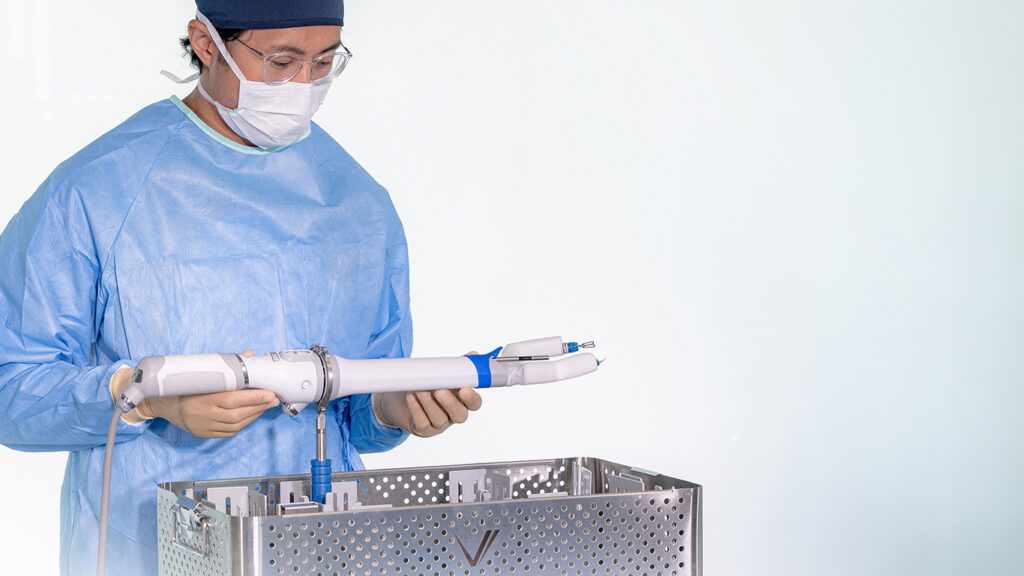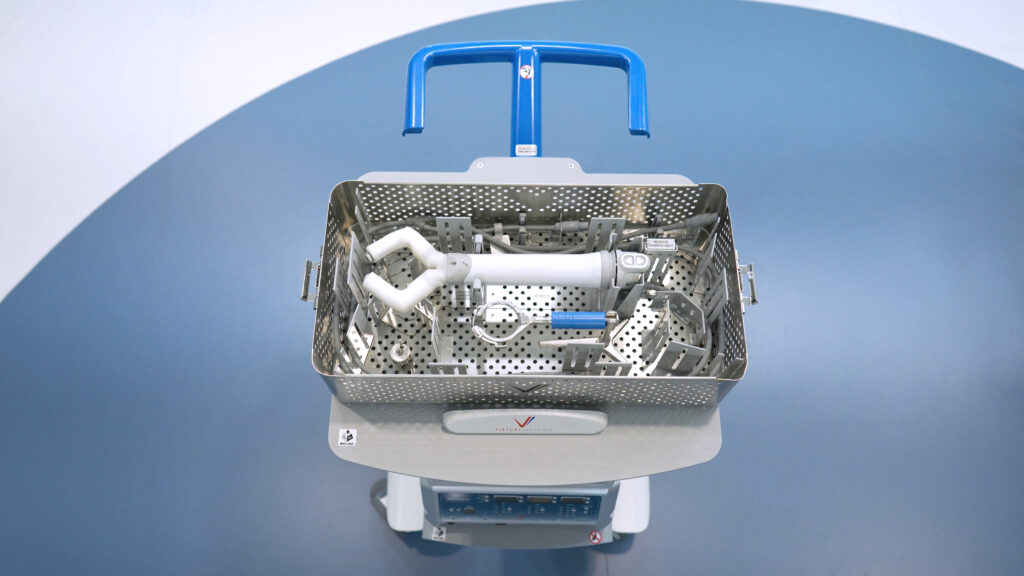
For our October Member Spotlight, we talked to Virtual Incision, the winner of the 2024 Governor’s Bioscience Award.
Tell us about Virtual Incision.

Virtual Incision, a Nebraska-based company, is revolutionizing the robotic-assisted surgery (RAS) industry through the development of MIRA, the world’s first miniaturized robotic-assisted surgery (miniRAS) system designed to bring the proven benefits of minimally invasive surgery to more patients, surgeons, and healthcare facilities with the ultimate goal of making every operating room robot-ready.
What products/services do you offer?
Recently commercialized, Virtual Incision offers the MIRA Surgical System, the world’s first miniaturized robotic-assisted surgery (miniRAS) system, for use in adults undergoing colectomy procedures using a minimally invasive approach. MIRA is designed to be convenient, capable, and compact so you can set up any operating room in minutes – without needing to drape or dock the room.
Minimally invasive surgery (MIS), a type of surgery that involves smaller incisions has transformed the surgical care landscape and patient outcomes through decreased pain, reduced complications, and shorter recovery time.1 MIRA’s innovative tray-to-table design could offer healthcare facilities the advantages of robotic surgery without requiring them to organize the OR around the device, a current challenge of existing mainframe surgical robots. MIRA’s compact, approximately two-pound (less than one kg) framework is portable and designed to minimize setup time, which could enable any OR to be robot ready within minutes.
Why is Nebraska an important location for Virtual Incision?
As spin-off work of early University of Nebraska research, the company received early funding from Nebraska-based companies. They pride themselves with leading the way as a strong Midwest based surgical robotics company.
How many employees and/or who are key employees for the company?
The company currently has a team of 68 employees, where over half work at the companies headquarters in Lincoln, Nebraska. The company has a full manufacturing and R&D area in the HQ. The company is known for its quick innovative ideas, which is part to who the company employees. We pride ourselves in being smarter, faster, and smaller and allowing more surgeons and patients access to minimally invasive surgery with our products.
Who are your customers and where are they located?
Virtual Incision began commercialization of MIRA earlier this year through its First Access Program in selected centers across the United States. The company plans to gain commercial proof points in clinical, operational, and strategic sectors before expanding to additional sites within the next year. Over the years, the company is looking for surgeons and hospitals who are looking to adopt this new technology into their practice.


What are some of the biggest challenges facing your industry today and how does Virtual Incision play a role in helping overcome those challenges?
When robotic-assisted surgery (RAS) technology was first introduced, it marked a significant transformation in surgical procedures. These systems where designed to perform complex procedures through small incisions with enhanced vision, precision, and control. Robotic arms controlled by the surgeon offer greater dexterity and reduced tremors, allowing surgeons to expand the range of minimally invasive surgeries they could offer. For patients, this meant less trauma to the body, and subsequently fewer complications.
However, mainframe RAS technologies do not come without limitations. These systems present challenges like high costs, extensive staff training requirements, long turnover times between procedures, and large physical size that make them less accessible to health systems. The complexity of mainframe RAS devices often limits how many surgeries can be performed per day, which means that each year, millions of patients who could benefit from robotic-assisted surgery go without it.
As technology has evolved throughout history, it has become smaller and more accessible. This is true across medical technology and consumer tech like computers or cell phones. Miniaturization brings the power of innovation to more people, improving lives along the way.
MIRA is compact and portable, weighing approximately two pounds and arrives in a sterile compact tray, making it portable to any operating room, allowing for setup in minutes, and eliminating the need for block time associated with mainframe systems. It is inserted through a single port with no docking or draping, empowering surgeons to quickly obtain full multi-quadrant access and work closer to the patient.
Virtual Incision is laying the foundation for advancements in robotic-assisted surgery with the development of MIRA. Whether as a complement to the existing mainframes or as a stand-along platform, miniaturization has the potential to accelerate the adoption of robotic-assisted surgery. The future of robotic-assisted surgery has always been mini – and Virtual Incision is leading the way.
What’s on the horizon for Virtual Incision?
Virtual Incision’s broader commercialization and expansion of its roadmap for future indications includes gynecology, general surgery, urology and other soft tissue and solid organ surgery. The company recently announced the successful completion of the first surgery in a clinical study assessing the safety and efficacy of its miniaturized robotic-assisted surgery (miniRAS) device in benign hysterectomy procedures. They intend to use the date for internal regulatory submissions for gynecological procedures.
